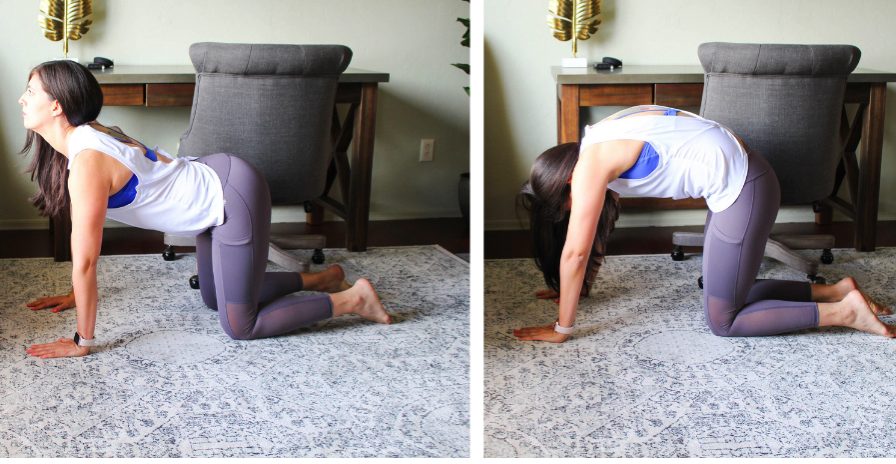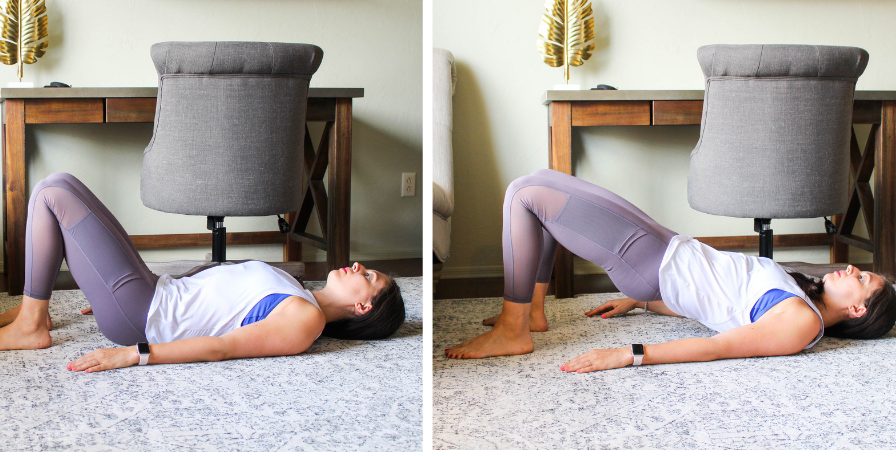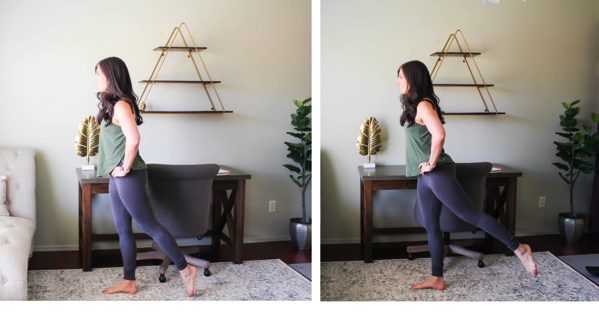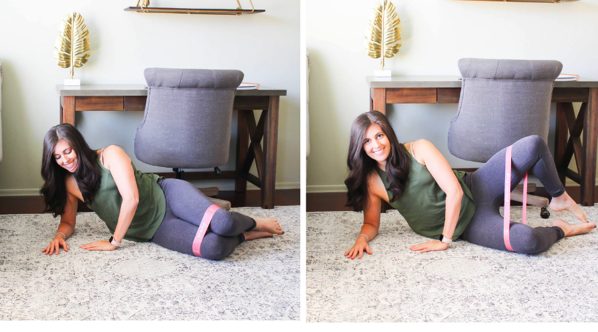Sharing some pregnancy fitness tips and how to stay active during pregnancy if that’s one of your goals. Always check with a doctor before starting or changing your fitness routine, and if you’re currently pregnant, follow the advice of your doctor or midwife. These are just some general tips and not meant to be a substitute for medical advice.
Even though that portion of my life is over, I still love training pregnant mamas and sharing the excitement of my pregnant friends. Both of our pregnancies were wildly different, but something that was important to me during pregnancy was trying to stay active, because it gave me energy and made me feel like myself.
It’s important to maintain an active lifestyle while you’re pregnant, especially because it can help with circulation, possible prevention of certain complications (like gestational diabetes), energy levels, and mood. While it’s beneficial for mama, a fitness routine during pregnancy can also have plenty of benefits for the growing baby. Staying fit is also beneficial as you recover from giving birth, as it can help with recovery, sleep, maintaining good posture and alignment, and restoring core function.
Being pregnant can require certain adjustments to your fitness routine and there are some things to consider as you work out during pregnancy. Today, I thought I’d share some helpful tips for readers with their fitness routines, while staying safe throughout the pregnancy journey. Please remember that I’m a certified personal trainer with extra education regarding pre and postpartum fitness, but I’m NOT a doctor. Always talk with your doctor or midwife about changing or starting a fitness routine.
Avoid exercises with a risk of falling or any possible trauma to the belly, like horseback riding, contact sports, boxing, etc.
You’re carrying extra weight, and your center of gravity is shifted, which can affect balance. If you’re using to a routine that requires stabilization and balance, and could lead to falling, I would recommend skipping it, or greatly modifying until after pregnancy.
Avoid any activity that affects oxygen intake or pressure, such as scuba diving.
From this study: “However, pregnant females should refrain from diving, because the fetus is not protected from decompression problems and is at risk of malformation and gas embolism after decompression disease. It is prudent to advise pregnant patients of the increased risk of diving problems for the fetus during pregnancy.”
Modify yoga classes as needed and watch out for over-stretching.
Prenatal yoga is usually a great bet, but you can absolutely modify traditional flow classes, as long as the room isn’t heated. I would recommend skipping hot yoga during pregnancy and also skipping inversions, unless it’s something you do very regularly and you have the doctor’s approval. I think it’s better to wait until baby is here to resume inversions (risk of falling) and hot yoga (which increases your heart rate to cool the body down and can lead to dehydration if you’re not properly hydrated). For yoga modifications during pregnancy, check out this post!
During pregnancy, as the body expands, w have increase relaxin in our bodies which can make us feel extra flexible and bendy. Avoid over-stretching as this can lead to injury. Each muscle has an optimal length where it has maximum strength and tension; avoid stretching beyond your optimal length.
Take modifications during bootcamp, F45, or Orangetheory classes.
Post with ideas on how to do this here! Many of these classes include explosive movements, HIIT intervals, and hardcore strength work. Focus on modifying and moving with more control and intention instead of blasting through the exercises.
Go by perceived exertion instead of heart rate.
The “heart rate rule” (not getting your heart rate above a certain number) is outdated. Increased blood flow during pregnancy can cause an artificially increased heart rate. Instead, use the talk test. When you’re working out, you should be able to say your full address without huffing and puffing. If you can’t do this, it’s a good clue to scale back
Take low-impact modifications as needed.
If you love taking a dance cardio or aerobics class, follow the low-impact modifications. Here are some ideas: instead of squat jumps, do regular squats. Do curtsy lunges instead of skaters. Try out burpees against a wall (get rid of the jump) instead of on the floor. Try alternating lunges instead of jumping lunges. Focus on MOVING instead of getting your heart rate super high during any HIIT intervals.
Skip exercises that are preformed in the supine position or prone position (on your back or on your belly) after the first trimester.
Any exercise you can do prone (on your belly) you can do standing, or on all fours. If an exercise is on your back, angle the bench so that it isn’t flat.
ACOG recommends skipping exercises on your back after the first trimester. The supine position can cause compression on the inferior vena cava, which is a large vein that carries deoxygenated blood from the lower and middle body to the right atrium of the heart. If you’re on your back, the pressure of the baby can compress this vein and reduce oxygen to the fetus. You may start to feel this, and feel uncomfortable, hot, and/or dizzy.
Tips for modifying exercises on your back are here.
Watch the core exercises, particularly with twisting, high intra-abdominal pressure, and heavy oblique work.
I like to joke that pregnancy is working on the reverse six pack muscles 😉 Instead of focusing on crunches, leg lowers, and sit-ups, switch your focus to stabilization and posture. Try out some diaphramatic breathing, spinal balance, pelvic tilts on a stability ball, and exercises that promote good posture and strengthen the posterior chain like deadlifts (not too heavy and widen your stance as needed), squats, and bent-over flys.
A good indicator that you’re increasing abdominal pressure: watching for “doming” or “coning” of the abdominal wall. If your belly is looking pointy during any exercise, like a cone instead of round, it’s an indicator that it’s too much pressure.
Listen to your body and adjust as needed.
Pregnancy is interesting because sometimes certain exercises feel great, while others feel terrible. During our first pregnancy, I was able to teach Zumba until right before I delivered. In our second pregnancy, I really gravitated towards strength training, walking, and yoga. Running pretty much always felt terrible. Listening to your body is so important, and don’t be afraid to scale back your routine.
This is probably my top pregnancy fitness tip: pregnancy isn’t the time to ADD anything to your routine. Instead focus on MAINTAINING.
Try to stick with your *normal* routine to the best of your ability (modifying for intensity and safety), but don’t add any new classes to your routine, or go after any PRs.
I have more tips here in the ultimate guide for prenatal workouts.
Best pregnancy exercises
Cat/cow:
Come onto your hands and knees with your knees stacked under your hips and your hands stacked under your shoulders. Lift up through your core and keep your neck long so your spine is straight. Take a nice big inhale, drop your belly, and gaze up towards the ceiling. As you exhale, round your back, gaze towards your belly button (or if you’re like me during pregnancy: where your belly button used to be), and feel the nice stretch through the length of the spine. Continue this pattern, taking long deep inhales, and long, cleansing exhales.
Bridges or hip raises:
Start on your back with legs bent and feet flat on the floor. Squeeze your glutes to lift your hips, keeping your upper back pressing into the floor. Lower down towards the floor (don’t touch it!) and exhale to rise back up.
Hip extensions:
Start standing and hold onto something sturdy for balance, like a countertop. Tap one foot behind you and then exhale to lift that leg off the floor, keeping your hips square. Hold at the top and lower down with control. Keep a slight bend in your standing leg.
Diaphragmatic breathing:
Fill your belly completely, but avoid letting your ribs move up as you inhale. Instead, think of your belly and ribcage as an umbrella: open it completely. As you exhale, close the *umbrella* and draw the belly towards the spine. You can also add a pelvic floor contraction + lift, but it’s important to make sure you’re doing these correctly. (<— reason 297338 why a pelvic floor PT can help you. I highly recommend seeing one during pregnancy and postpartum.)
Clamshell with a band:
Start on your side, with the band two inches above your knees. Rest on your elbow, or all the way onto the floor. Keep your knees bent, and squeeze your glutes to open your knees, and try to break the band. Lower down with control, then exhale to open as far as you possibly can.
Spinal balance:
Come onto hands and knees (hands under your shoulders and knees under your hip bones). Extend one arm and the opposite leg, keeping your hips parallel to the floor. Flex your foot and gentling pulse your heel up towards the ceiling (or sky!). Squeeze your glute to lift your leg and keep your core engaged.
Here is a prenatal workout video with some of my favorite exercises!
More:
How to modify Orangetheory when you’re pregnant
Core training during pregnancy
Can you work out on your back during pregnancy?
Keep the intensity, lose the impact
Heads up: I’m going to be completely revamping my postpartum fitness plan. If you’d like the chance to get it now, use the code lastchance for 50% off.







